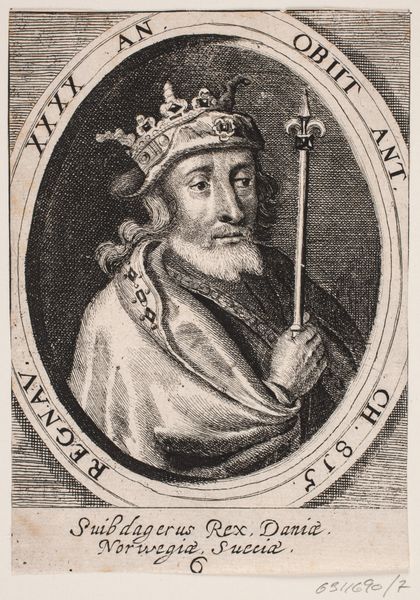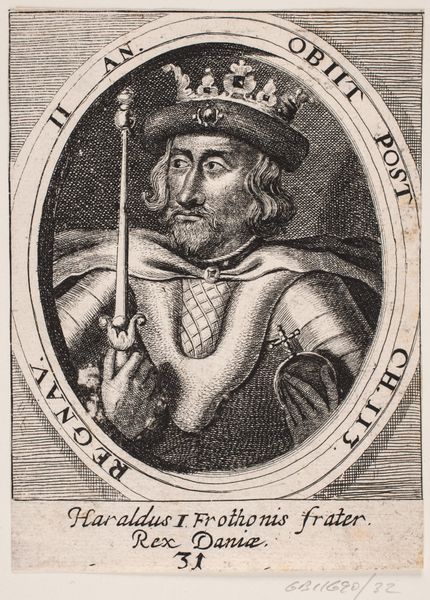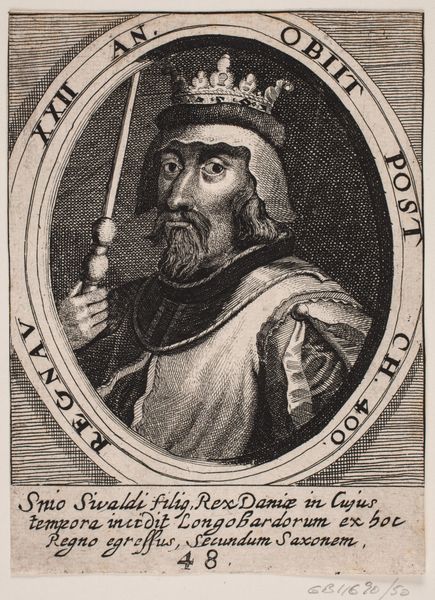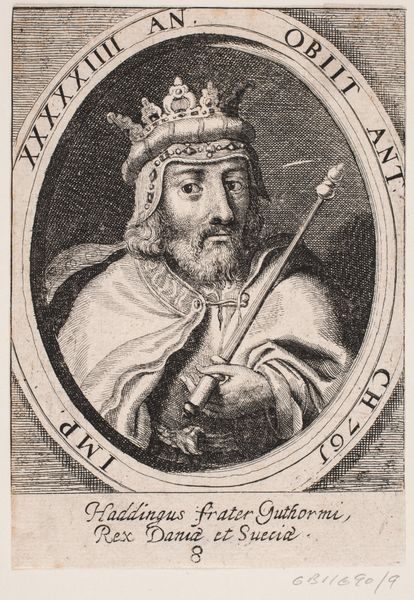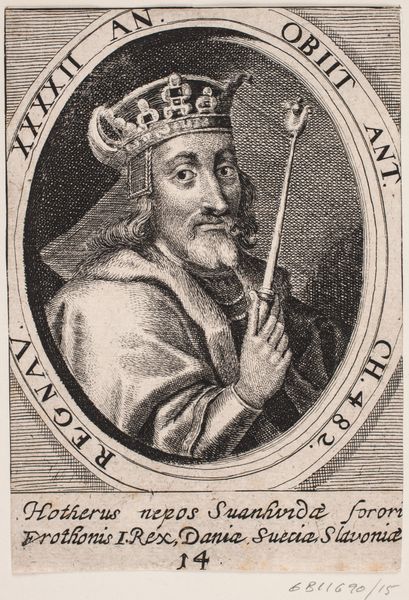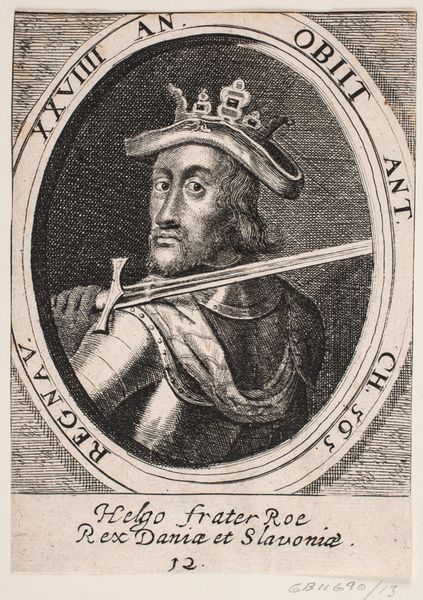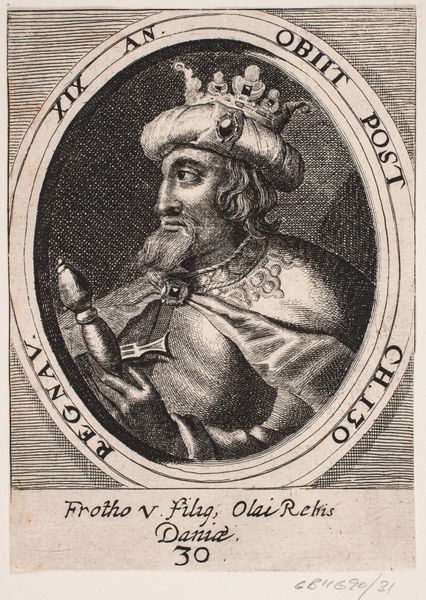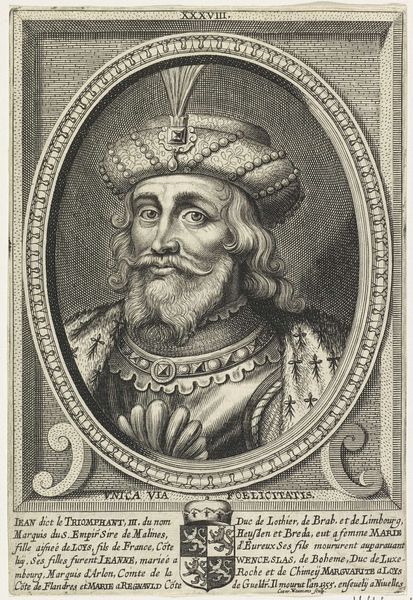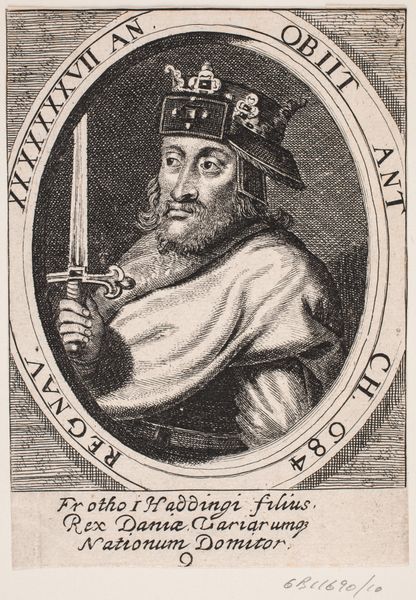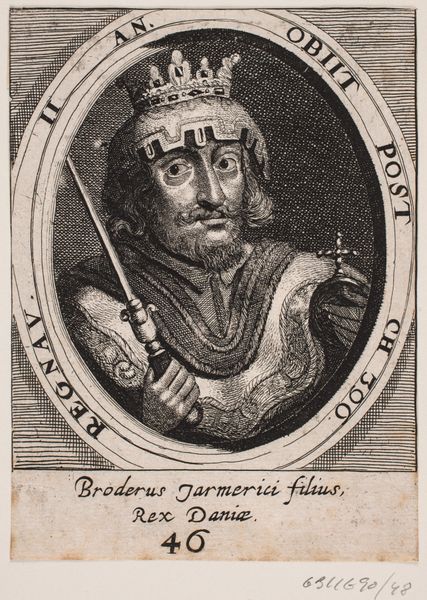
print, etching, engraving
#
portrait
#
baroque
# print
#
etching
#
old engraving style
#
caricature
#
history-painting
#
engraving
Dimensions: 140 mm (height) x 100 mm (width) (bladmaal)
Curator: The intricate detailing here is remarkable. What strikes you immediately about this print? Editor: The precision! It's incredible, the way light and shadow are rendered with such fine lines. The oval frame really draws attention to the subject’s gaze, making him appear very stately. Curator: Indeed. What we’re looking at is a portrait of Kong Guttorm, created around 1646. It's an etching, engraving and print and part of the collection at the Statens Museum for Kunst. Think about what that context means. These depictions served powerful functions. Editor: Functions beyond simple representation, obviously. The baroque era adored spectacle and theatricality and it shows. His bearing speaks volumes, even divorced from any historical account of his reign. He holds a small globus cruciger in his hand, which is really something! Curator: Precisely! Globes featuring the Christian cross served as visual cues of power and divine legitimacy, resonating especially during a period of religious upheaval following the Reformation. Consider how images were utilized to cultivate ideals of statehood at the time, amidst constant conflict between Denmark and Sweden. Editor: I hadn't thought about how actively that tiny detail shaped contemporary perception. Speaking only of the form and texture—you can practically feel the weight of the fur on his hat, although there's something oddly anachronistic about it... a slight cartoonishness that borders on caricature, maybe. Curator: It’s fascinating to view this from today’s lens. We can explore how notions of representation change alongside shifting power dynamics, the artist’s perspective becoming just as valid as that of a king. The print becomes not merely a reproduction, but an invitation into our ongoing dialogue concerning Denmark’s past. Editor: That adds such a valuable dimension; I won't look at portraits quite the same way again. Thank you. Curator: My pleasure. Every element here resonates within a broader context. Looking through an intersectional lens is essential, really.
Comments
No comments
Be the first to comment and join the conversation on the ultimate creative platform.

